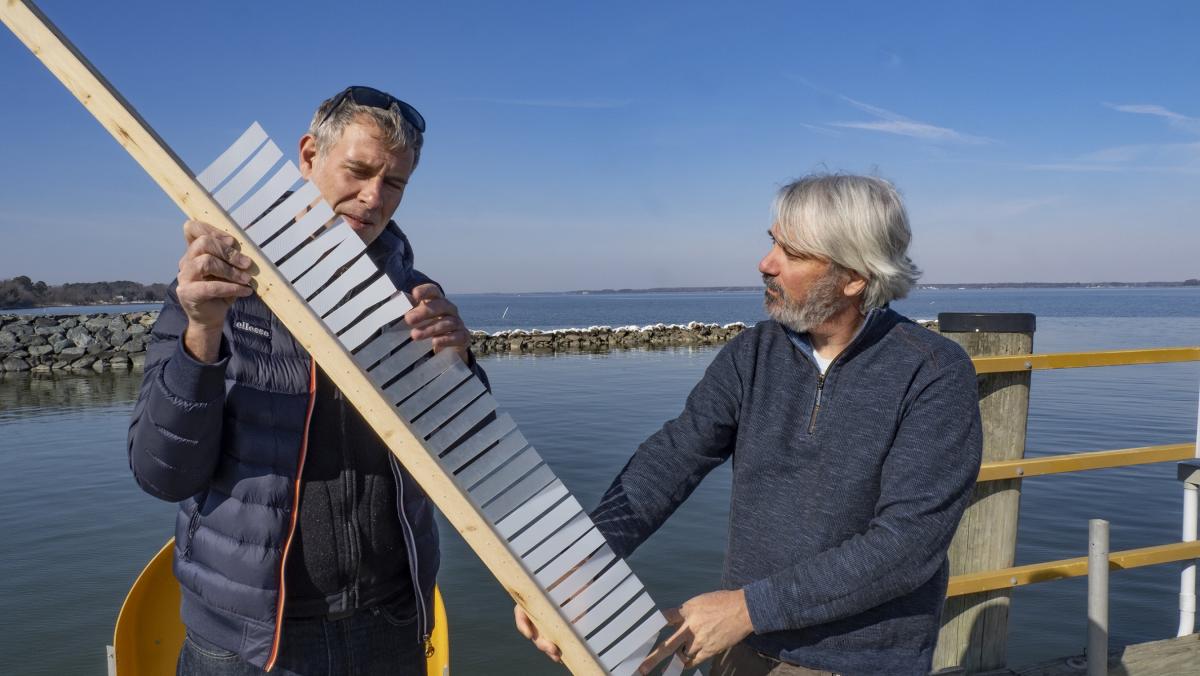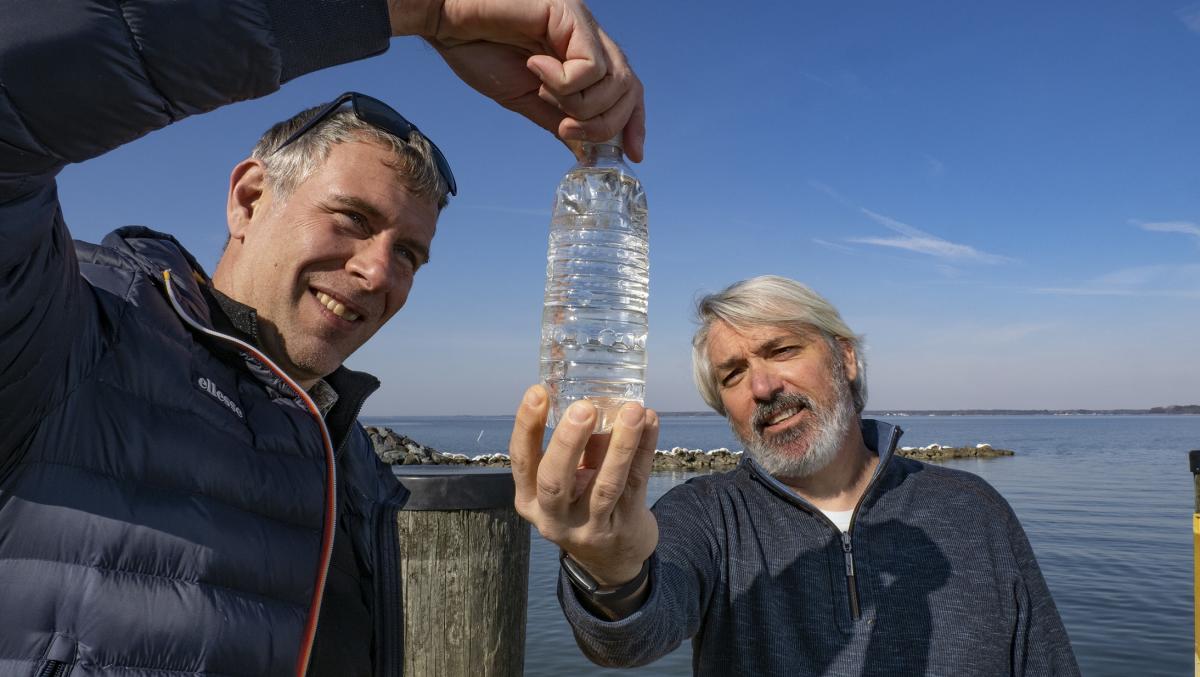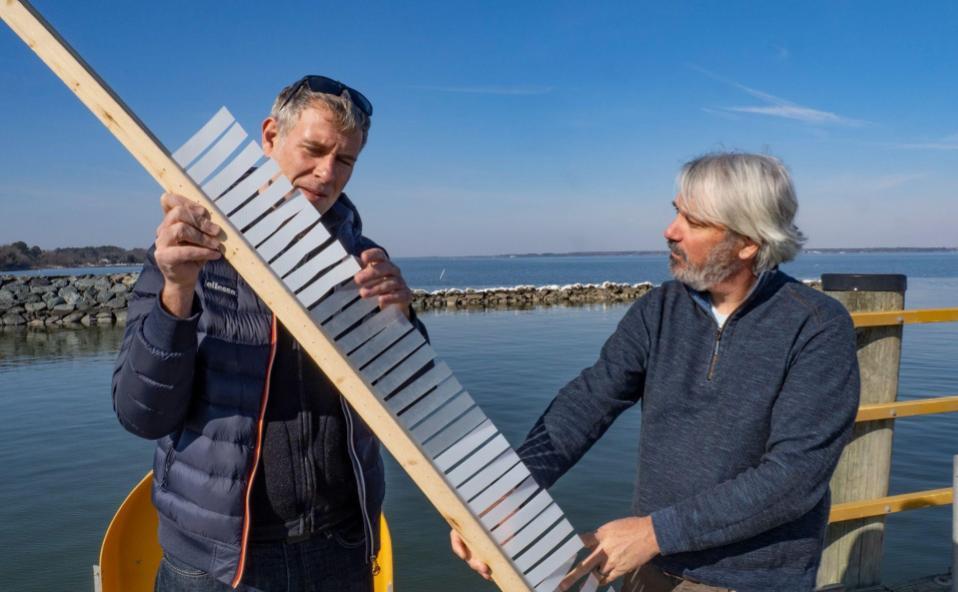Scientists at the University of Maryland Center for Environmental Science’s Horn Point Laboratory have embarked on a research project that will lay the foundation for plastic research in the Chesapeake Bay. The two-year project, funded by the National Oceanic and Atmospheric Administration’s Marine Debris Program, will track how microplastics move through the Choptank River watershed on the Eastern Shore of Maryland.
Thanks to a $30,000 matching grant from the Mid-Shore Community Foundation (MSCF) and a group of generous donors who met the match, a short-wave infrared (SWIR) microscope will be purchased. This camera microscope system transforms the project. Project Co-leaders are Drs. Jamie Pierson and William Nardin. Pierson stated, “We are thankful for the support we have found with people in the local community who contributed to our work on microplastics in the Choptank River. With this new microscope we will be able to tell not only how much microplastic is in our samples, but what are the kinds of plastic in different parts of the river.”

William Nardin and Jamie Pierson with plastics board. Photo by Dave Harp.
Plastic samples of all sizes, from plastic bags to microplastics barely invisible to the naked eye, will be collected and examined. Along with the SWIR microscope, a drone outfitted with a special camera will be used to scope out larger plastic debris in the watershed from above. Both devices can identify different types of plastics, from plastic bag from beach ball to water bottle. Experiments will look at six different types of plastic, which degrade differently and have different densities, and how they may be trapped or move differently in different places in the river at different times of year.
“Potentially, we’ll be able to make the connection between bigger pieces of plastic in a marsh that break down, and the pieces feeding into river system leading to microplastics in the water. We’re hoping to figure out if different types of debris get moved in different ways,” said Pierson.
The project will also create a group made up of experts and stakeholders that will advise the research in specific ways to ensure that the outcomes of the project are relevant to policy makers and directly inform management actions regarding plastic marine debris.
“The goal is to develop a budget that illustrates plastic debris input and retention in marsh and open water habitats of the Choptank river system,” said Assistant Professor William Nardin. “Ultimately, this information will allow stakeholders to examine how plastic debris deposition differs across habitats, different flow regimes, and different plastic loads, and to assess potential management strategies to mitigate plastic pollution.”
Studies have estimated that up to 95% of the waste that accumulates on shorelines, the sea surface, and the seafloor is plastic. To date, most published studies on plastic debris have focused on marine ecosystems and not estuaries, rivers, or freshwater systems. Even fewer studies have focused on the interaction of coastal wetlands, such as underwater grasses or marshlands, and the accumulation of microplastics.

William Nardin and Jamie Pierson looking into plastic bottle. Photo by Dave Harp.
Large pieces of debris are most obvious, but increasing attention has been paid to microplastics, which are less than 5 millimeters in size, or smaller than a pencil eraser. These smaller particles have specific and important human and ecological health implications because they can enter the food chain when they are ingested by the creatures at the base of the food chain.
All of the data gathered will be made available to stakeholders and policymakers from agencies such as NOAA and the Maryland Department of Natural Resources, as well as local agencies and NGOs, to be applied to coastal wetland systems, locally and globally. umces.edu/microplastics-marine-debris-project
UNIVERSITY OF MARYLAND CENTER FOR ENVIRONMENTAL SCIENCE
The University of Maryland Center for Environmental Science leads the way toward better management of Maryland’s natural resources and the protection and restoration of the Chesapeake Bay. From a network of laboratories located across the state, UMCES scientists provide sound evidence and advice to help state and national leaders manage the environment, and prepare future scientists to meet the global challenges of the 21st century



Write a Letter to the Editor on this Article
We encourage readers to offer their point of view on this article by submitting the following form. Editing is sometimes necessary and is done at the discretion of the editorial staff.